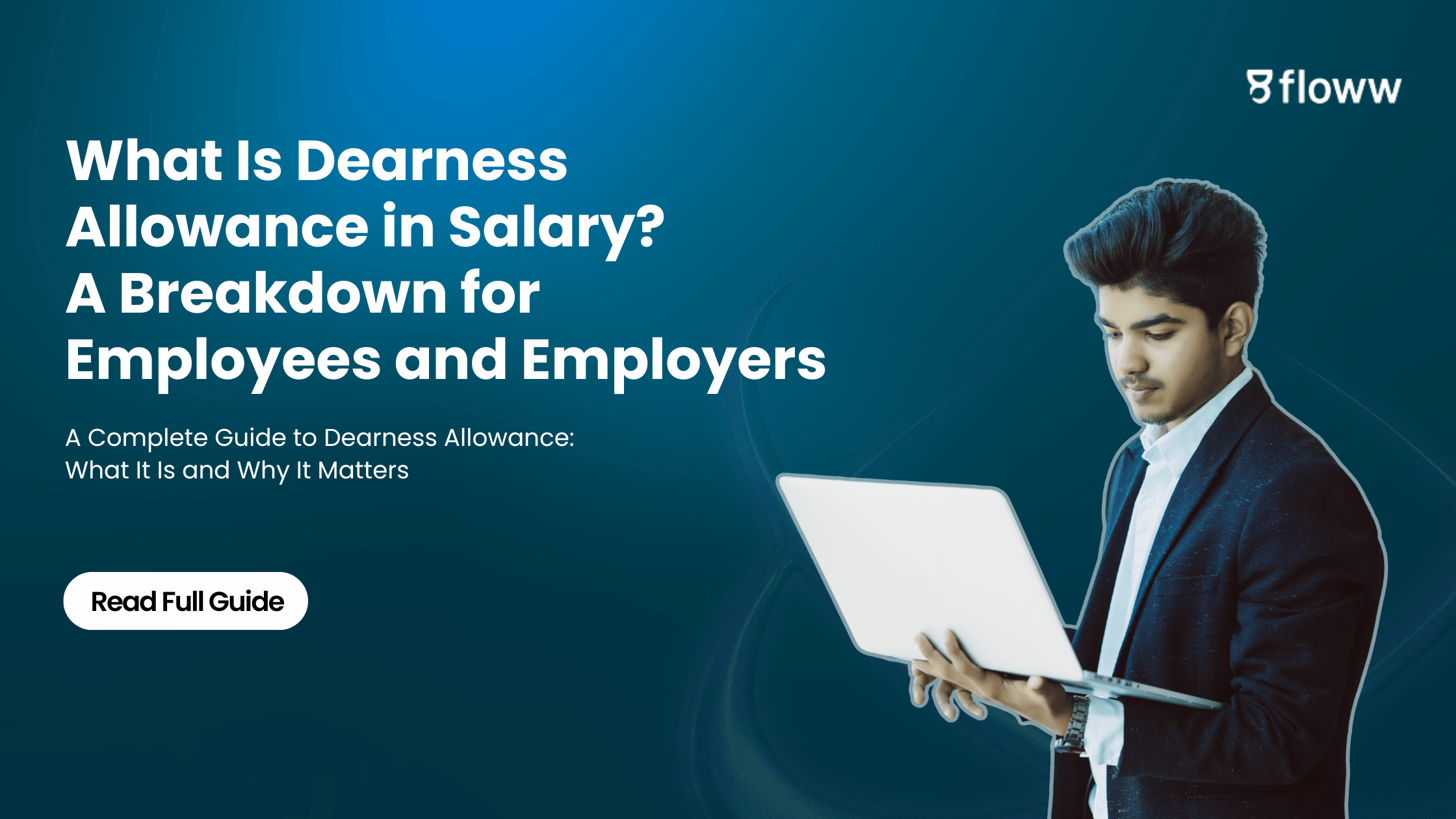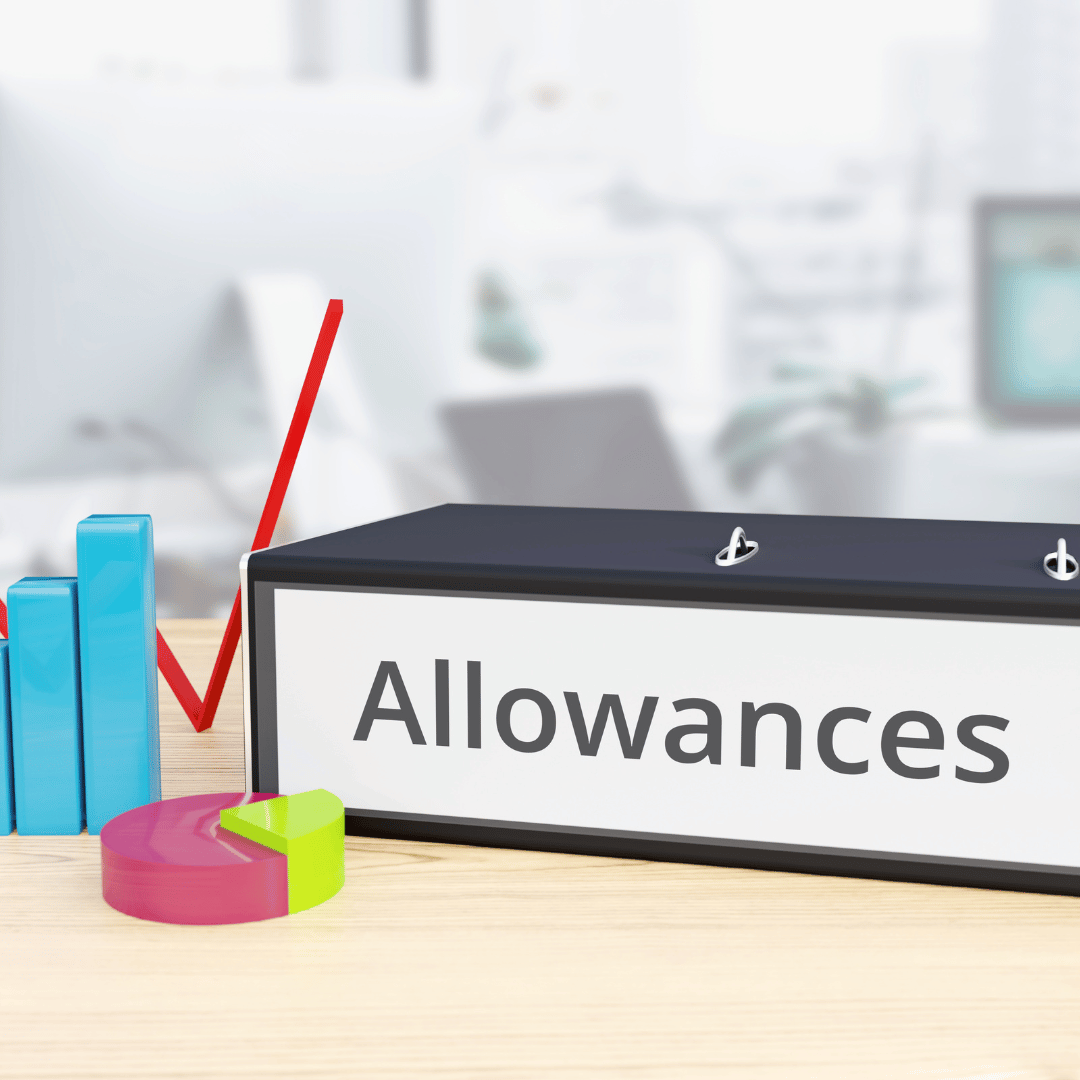What Is Dearness Allowance in Salary? A Breakdown for Employees and Employers
Dearness Allowance isn’t a tip for being sweet at work. It’s your salary’s way of saying, “Inflation, not today!” From chai prices to rent hikes, DA helps you keep up. Here’s the rundown on what it is, who gets it, and why it matters.

Few components of the Indian compensation structures stir as much confusion and carry as much weight as Dearness Allowance (DA). It isn’t just a line item on your payslip. It’s a powerful financial lever tied directly to inflation, cost-of-living adjustments, and long-term employee satisfaction.
Yet, despite being a recurring element in government salaries and public sector payrolls, DA remains under-explained and misunderstood, especially by private sector employers and small business owners.
In this in-depth, industry-specific breakdown, we’ll not only answer the frequently searched queries like "what is dearness allowance in salary" and "how to calculate dearness allowance", but also explore its strategic implications for employers and financial significance for employees.
The Evolution of Dearness Allowance

Dearness Allowance originated as a response to economic turbulence. Introduced during the Second World War era, DA was initially designed to offset the rising cost of living due to wartime inflation. Over time, as the Indian economy matured, it became a formal part of the salary structure for government employees, pensioners, and certain PSU (Public Sector Undertaking) staff.
At its core, DA is a cost-of-living adjustment allowance paid to employees to help them cope with inflation. It is revised periodically based on the Consumer Price Index (CPI), making it a dynamic part of the salary that evolves with macroeconomic conditions.
What Is Dearness Allowance in Salary?

Dearness Allowance is a fixed percentage of the basic salary that is added as a separate component. It is not performance-based or incentive-driven but is directly linked to inflation rates published by the government. For government employees and pensioners, it is a statutory benefit, regularly revised twice a year, typically in January and July.
Private sector companies, especially MSMEs, are not legally bound to offer DA. However, many progressive employers include it to align with industry benchmarks or to retain talent by ensuring income stability during inflationary periods.
Types of Dearness Allowance: Understanding the Variants
There are two main types of DA in India:
- Industrial Dearness Allowance (IDA): Applicable to public sector employees, IDA is revised quarterly based on changes in the CPI.
- Central Dearness Allowance (CDA): Applicable to central government employees and pensioners, CDA is revised bi-annually.
The distinction matters because IDA follows a more agile revision cycle, making it more reflective of real-time inflation, while CDA follows a more stable, long-term pattern. The percentage of DA granted can vary depending on the employment sector and governing body.
Also Read: A Complete Guide On How To Make A Payslip
How to Calculate Dearness Allowance
While the calculation methodology might seem complex at first glance, it essentially involves a fixed formula that varies slightly depending on whether you are dealing with CDA or IDA.
Here’s a simplified explanation of how DA is calculated:
For Central Government Employees (CDA Pattern): DA (%) = x 100
- The base index is currently fixed at 261.4 as per the 7th Pay Commission
- The CPI is taken from the Labour Bureau’s monthly data
- The final percentage is rounded off as per government norms
For Public Sector Employees (IDA Pattern): IDA (%) = (Average CPI - Base Index) x A factor (depending on pay revision year)
These figures are then converted into a percentage of the basic salary and disbursed accordingly. The complexity of the CPI and revision schedules is why many organizations rely on automated payroll software or government notifications for accuracy.
DA in the Private Sector: Voluntary or Strategic?

While there is no statutory requirement for private firms to offer DA, incorporating it into salary structures can be a strategic decision. Especially in inflation-heavy economic periods, employers who adjust for the cost of living, build higher employee morale and retention.
For MSMEs, the question isn’t just "should we offer DA?" but rather "how can we remain competitive without burdening cash flow?" A hybrid approach is emerging where DA is built into CTC (Cost To Company) structures under different labels like cost-of-living allowances or inflationary adjustments, without formally using the term "Dearness Allowance."
Tax Implications of Dearness Allowance
One critical aspect employers and employees must note is that DA is fully taxable. It is added to the gross income and taxed according to the applicable income slab. In cases where DA forms a part of retirement benefits, such as for calculating pension, it is also considered while computing Provident Fund contributions.
For organizations using outdated salary structuring methods, improper tax calculations around DA can lead to compliance issues. Payroll software or experienced HR consultants are crucial in ensuring both clarity and legality.
The Role of DA in Pension Calculations

For government employees, DA is not just relevant during active employment. It plays a significant role in retirement planning. Post-retirement, pensioners continue to receive DA as per revised rates declared by the government.
This has a compounding impact on income security post-retirement, especially in an economy where inflation can quickly erode the purchasing power of fixed pensions. For private employers considering long-term retention plans, mirroring such benefits can be a major differentiator.
Install the Atom HR App: Click Here
Recent Updates: DA Hike Trends and Their Impact
The Indian government routinely revises DA rates based on inflation data. For instance, in 2024, there was a significant DA hike for central government employees from 42% to 46% of basic pay. These hikes are not arbitrary. They reflect real-time inflation trends and serve as economic relief mechanisms.
For private employers and MSMEs, tracking these hikes provides insight into broader economic conditions and helps them benchmark internal salary adjustments accordingly.
Digital Solutions: Automating DA Calculations with Payroll Software

Manual DA computation, especially in mid to large-scale organizations, is both inefficient and risky. The modern approach is integration with payroll software that auto-updates DA based on government notifications and CPI indexes.
Good payroll platforms allow:
- Configuration of different DA types (CDA/IDA)
- Automatic tax calculations
- Integration with employee payslips and reporting dashboards
- Real-time compliance checks
For MSMEs looking to scale, investing in a platform that offers these features ensures accuracy, saves time, and builds employer credibility.
Also Read: You Got Hacked. Now What?
Dearness Allowance as a Strategic Lever
Dearness Allowance is more than a relic from India’s economic past. It’s a modern tool for salary correction, inflation management, and employer branding. For employees, it means financial cushioning. For employers, it represents strategic foresight.
If you are an employee trying to decode your payslip or an MSME owner contemplating salary restructuring, understanding DA is essential. As inflation ebbs and flows, a well-structured DA policy can be the stabilizer your workforce needs. In a world that’s changing rapidly, Dearness Allowance offers a rare constant: the promise that your earnings will evolve with your environment.

